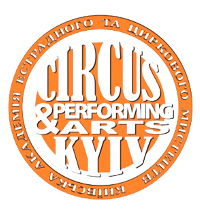Self-portrait in the classical tradition in the context of expanding the boundariesof realist representation
Abstract
The article proposes an understanding of the phenomenon of self-portrait in Renaissance and Mannerist painting in the context of going beyond the purely representative function of realistic reproduction of the portrait's appearance. In this perspective, self-portrait is first considered as an attempt by artists to come out of the shadows – to present themselves through painting in two dimensions – physical (bodily) and spiritual (personal). This study emphasizes that the mimetic nature of classical art, which was based on a mirror image of reality, imitation of nature, even in such a genre as portraiture, did not limit the artist's ability and desire to expand the boundaries of perception of the artwork, to transform reality in accordance with their own ideas. Such artists as Jan van Eyck, Michelangelo, Dürer, and Parmigianino were proud of their masterful skills in “mastering” reality, their talents for illusory imitation of nature. At the same time, they raised the status of the artist from an artisan to a self-sufficient and independent virtuoso who chose his own path of growth (Michelangelo, Jan van Eyck), an intellectual, chosen by God (Dürer), and the creator of the unprecedented (Parmigianino). By realizing their exclusive role, their own way of seeing, artists laid the groundwork for the formation of the theory of the artist-creator, art as self-sufficient creativity, which was expressed in the extreme form of the modernists' idea of creation “ex nihilo”. It is also revealed that at first the artists included their self-portrait in the compositions of religious works, which also served as a kind of signature of the work, a confirmation that the work was made by the artist depicted in it, and in the sixteenth century the self-portrait finally became a full-fledged type of portrait painting. The research was based on an interdisciplinary approach, the method of art historical analysis, and the iconographic method.
References
2. Міщенко І. Автопортрет в мистецтві Буковини ХХ-ХХІ століття. Collection of scientific papers «SCIENTIA». 2022. №. August 5. Сс. 185–187.
3. Пономаренко М. «Автопортрет» Миколи Глущенка 1923 року: в дзеркалі Відродження. Український мистецтвознавчий дискурс. 2023. № 2. С. 84–90.
4. Романенкова Ю. XVI століття як «батьківщина» автопортрету: передумови виникнення, світоглядні засади. Молодий вчений. 2015. Вип. 9 (24). С. 109–118.
5. Романенкова Ю. Феномен маньєризму у мистецтві Європи XVI – початку XVII ст.: до питання про походження стилю. АРТ-платФОРМА, 2021. Вип. 1(3). С. 259–293.
6. Сімферовська А. Від атрибуту до алегорії: львівські автопортрети Одо Добровольського. Вісник Львівської національної академії мистецтв. 2017. №. 34. С. 218–231.
7. Татаркевич В. Історія шести понять: Мистецтво. Прекрасне. Форма. Творчість. Відтворництво. Естетичне переживання. Київ: Юніверс, 2001. 368 с.
8. Carbon C. C. Universal principles of depicting oneself across the centuries: from renaissance self-portraits to selfie-photographs. Frontiers. 2017.
URL: http://surl.li/mktghx
9. Chapman H.P. Self-Portraiture 1400-1700. A Companion to Renaissance and Baroque Art. Edited by Babette Bohn and James M. Saslow. West Sussex: Wiley-Blackwell, 2013. Pр. 189-209.
10. Hall J. The Self-Portrait: A Cultural History. London: Thames & Hudson. 2014. 288 p.
11. Rebel E. Self-portraights. Köln: Taschen. 2022. 96 p.
12. Woods-Marsden J. Renaissance Self-Portraiture: The Visual Construction of Identity and the Social Status of the Artist Hardcover. Yale: Yale University Press, 1998. 296 р.
13. Zollner F., Thoenes C., Popper T. Michelangelo: Complete Works. Köln: Taschen. 2007. 768 p.

 ISSN
ISSN  ISSN
ISSN 



